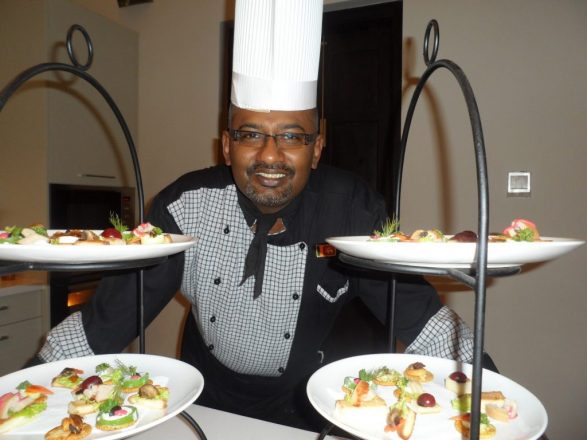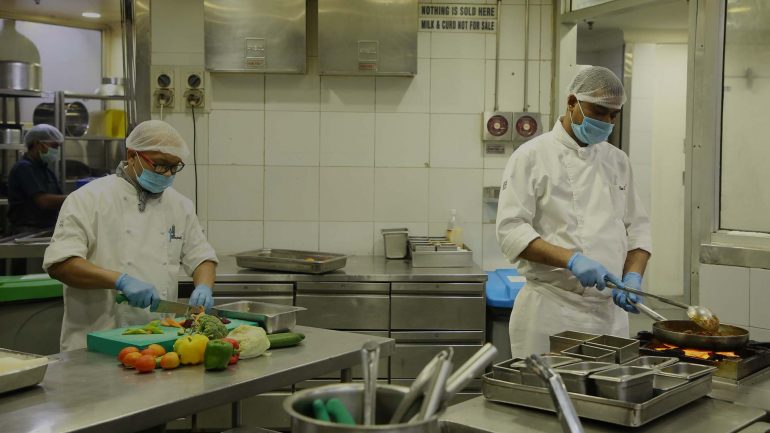







Few destinations on earth can boast desert Island idyll credential like Resort Sri Lanka.
Sri Lanka is known as “the Pearl of the Indian Ocean” because of its natural beauty, its shape and location, and also “the nation of smiling people”. Resort Sri Lanka has many beautiful Buddhists temples, ancient towns and cities, national parks, including wildlife safaris to lovely breathtakingly fabulous sandy pristine golden beaches with lapping waves, swaying coconut trees to lush beautifully planed tea plantations to sandy clean beaches.
Resort Sri Lanka is an island country which is situated in the North of the Indian Ocean below the Indian subcontinent located in the Indian Ocean southwest of the Bay of Bengal and southeast of the Arabian Sea.
It is rich in history and has some of the best historical architectures and structures built all around the country. Rock fortress, real size beautiful Lord Buddha’s statues and other unique architectural pieces are something that attracts tourist to this country from all around the world. Its rich heritage, marvellous beauty, excellent wildlife and wonderful culture are something that you cannot resist.
ResortSrilanka’s beaches are well known for their idyllic looks and beautiful scenery. The country owns many beaches east to west the beaches vary from long golden ones to the perfect wind and waves. And the best part is, the majority of these Sri Lankan beaches are really as beautiful as you’ve seen in the guidebooks. Visiting beaches are absolute Must Do in Sri Lanka!
Apart from being very well known for its nature, beaches, culture and tradition, Sri Lanka is also known for its beautiful girls and ladies. This is a country surrounded with nature all around and thus the girls here are naturally beautiful and amazing looking. They are attractive as well as intelligent, an unusual amalgamation.
Buddhist Nation
Buddhism was introduced to the island 246 years before the birth of Christ. The kingdom was overrun by the Chola army, which had conquered southern India under Rajaraja the great (985-1018). This resulted in the setting up of a new power base, with Polonnaruwa as the centre of the Kingdom. Conquest of the Cholas eventually came under forces led by Vijayabahu 1 (1055-1110) who restored Buddhism to prominence after the Cholas’ Hinduism.
Sri Lanka’s documented history spans 3,000 years, with evidence of prehistoric human settlements dating back at least 125,000 years. It has a rich cultural heritage, and the first known Buddhist writings of Sri Lanka, the Pāli Canon, date back to the Fourth Buddhist council in 29 BC. Its geographic location and deep harbours made it of great strategic importance from the time of the ancient Silk Road through to the modern Maritime Silk Road. Its location as a major trading hub made it known to both the far East as well as the European continent as far back as the Anuradhapura period. The country’s trade in luxury goods and spices attracted traders of many nations, creating Sri Lanka’s diverse population. During a period of great political crisis, the Portuguese, whose arrival in Sri Lanka was largely accidental, sought to control the island’s maritime regions and its lucrative external trade. The Portuguese possessions were later taken over by the Dutch. The Dutch possessions were then taken by the British, who later extended their control over the whole island, colonising it from 1815 to 1948. Resistance to the British was immediate. A national movement for political independence arose in the early 20th century, and in 1948, Ceylon became a republic and adopted its current name in 1972. Sri Lanka’s recent history has been marred by a 26-year civil war, which ended decisively when the Sri Lanka Armed Forces defeated the Liberation Tigers of Tamil Eelam in 2009.

One of the most revered temples in Colombo.
Established in the 19th century, the Gangaramaya Temple has become a landmark and a place of vibrancy in its relatively short history. The temple was administered by illustrious monks like the Venerable Hikkaduwe Sri Sumangala, founder of the Vidyodaya University for monks and Venerable Devundera Sri Jinarathana. What was once a simple structure on swampy land has evolved to lay claim to a fusion of architecture and decor from Buddhist countries in the region. It has a library, a museum and an extraordinary collection of ornamented and gilded gifts presented by devotees to the temple on display. The Temple’s main event takes place in February during the full-moon day of Navman Poya. The annual procession is a show of culture and tradition displayed in colour and pageantry with bejewelled elephants and dancers parading the streets of Colombo.
Colombo


Colombo’s history starts later than that of the Cultural Triangle. It was used as a port in the 8th century by Arab traders. The settlement there was referred to by a Chinese traveller in 1330 as Kao-lan-pu. Even today, the Sinhalese call it Kolomba, which seems similar.
The settlement was fortified by the Portuguese in the 16th century with a wooden stockade, which the Dutch improved. The British, who came in 1796, extended the city south and east beyond the Fort’s limits, leaving a legacy of wide streets and spacious buildings, as though they knew that two centuries later, they would be required to accommodate far more traffic and people than existed then. The Fort itself has completely vanished, but the area is still called in Sinhala as Kotuwa, meaning Fort.
Today, Colombo is the gateway to Sri Lanka for most travellers. Take a popular train ride from Colombo to Ella or along the coast to Mount Lavinia, a popular beach, Gangaramaya Temple, Dehiwala Zoo, Colombo has a wide range of attractions including: The colonial era and the island’s rich historical heritage have resulted in many interesting buildings, temples and parks which will add some unforgettable memories to your holiday in the capital city of Sri Lanka
Galle Face Green – Colombo

Galle Face is a 5 ha (12 acres) ocean-side urban park, which stretches for 500 m (1,600 ft) along the coast, in the heart of Colombo, the financial and business capital of Sri Lanka. The promenade was initially laid out in 1859 by Governor Sir Henry George Ward, although the original Galle Face Green extended over a much larger area than is seen today. The Galle Face Green was initially used for horse racing and as a golf course, but was also used for cricket, polo, football, tennis and rugby.
Galle Face Hotel-Colombo

The hotel was originally built by four British entrepreneurs in 1864. Its name derives from the stretch of lawn which it faces, known as the Galle Face Green. It began as a Dutch villa called Galle Face House. Land for the hotel’s expansion was purchased between 1870 and 1894.
South Asia’s leading Grande Dame, the Galle Face Hotel is testimony to both Sri Lanka’s colonial past and its independent present. Celebrated within the hospitality world, it blends historical splendour with crafted modernity to form a new model for heritage properties. International guests are immersed in the Galle Face Hotel’s rich traditions and compelling stories, while Colombo society perceive the hotel as the most prestigious, desirable destination in the city for memorable dining and special events. Whether at the hotel for dinner or for a month-long stay, an experience of the Galle Face Hotel is one of timeless grandeur and exceptional hospitality.
It was in 1894, that it became a two-storey luxury hotel, with the help of the most famous architect of the time, Edward Skinner, while between 1903 and 1909, the Galle Face Hotel Company continued to buy up land that would allow the hotel to expand to its present size. One of the shareholders in 1911 was Mr Victor Vicarosso, the great grandfather of the current Chairman and owner of the hotel.
In 1960 Mr Cyril Gardiner became a director of the Hotel and the Chairman in 1965. Upon his passing in 1996, his only son Mr. Sanjeev Gardiner became the Chairman of the Galle Face Hotel and continues to hold this title, extending the family association for over 100 year.
Presidents, Royalty to Celebrity Guests List at the Galle Face Hotel
Celebrity guests include Mahatma Gandhi; the first man in space, Yuri Gagarin; John D. Rockefeller; former British Prime minister Edward Heath; Princess Alexandra of Denmark; Prince Philip, Duke of Edinburgh; First Prime Minister of India Jawaharlal Nehru; Indira Gandhi, Prime Minister of India; journalist Eric Ellis and photographer Palani Mohan; future British RAF officer and MI6 agent F. W. Winter Botham; Prince Sadruddhin Aga Khan; then-Prince Hirohito of Japan; Roger Moore; Carrie Fisher; Richard Nixon, US President; Lord Louis Mountbatten, 1st Earl Mountbatten of Burma; Noël Coward, English playwright, composer, director, actor and singer; Josip Broz Tito, Marshal of Yugoslavia. In January 2018 Prince Edward and the Countess of Wessex stayed at the hotel during their five-day official visit.
Galle Face Hotel Restaurants
The Galle Face Hotel has three world class restaurants, two bars and a pub. They are the Seaspray seafood restaurant, the 1864 fine dining restaurant and wine cellar, a buffet restaurant known as the Verandah, Travellers’ Bar, the Pool Bar, and an English pub called “In. On the Green”. The open Verandah restaurant is the venue for the Afternoon Tea on the terrace.
Galle Face Hotel Colombo in the 1930s: did you reserve your table at the Veranda Restaurant? It was the most sought-after lunch and dinner venue of the colonial city, away from the stifling heat of Colombo. This tropical hotel, north of the Equator, was right at the seafront, facing the Indian Ocean. It always enjoying a fresh sea breeze. Ever since its opening in 1864, it advertised itself as the “coolest hotel in Colombo”. It has successfully retained this attribute. By the way: it was the first South East Asian hotel sporting a sea water pool.
Galle Face Hotel Museum
The museum and art gallery at the Galle Face Hotel
The hotel features a museum and art gallery in its Regency Wing, which houses the first car that Prince Philip, Duke of Edinburgh owned, and several pieces of memorabilia from the hotel’s history
History British Governor General at Mount Lavinia
Mount Lavinia is a city located 12 km (7.5 mi) from Colombo, the commercial capital of Sri Lanka. It is considered a middle-class and mostly residential suburb of Colombo. The city is known for its “Golden Mile” of beaches, making it a popular tourism location. Mount Lavinia’s name comes from Sir Thomas Maitland who was the Governor General of Ceylon from 1805 to 1811. He fell in love with a local mestizo dancer, Lovina, at his welcoming party on the island and had a secret affair with her for a short period of time.
The Mount Lavinia Hotel (now)
The Mount Lavinia Hotel, in Mount Lavinia, Sri Lanka, is a 275-room hotel, situated at Hotel Road in Mount Lavinia. It is recognised as one of the oldest and most famous hotels in the country. It has been continuously operating as a hotel since 1947, but was initially constructed as the Governor’s residence in 1806. Still maintained its iconic Colonial style going back to colonial period.


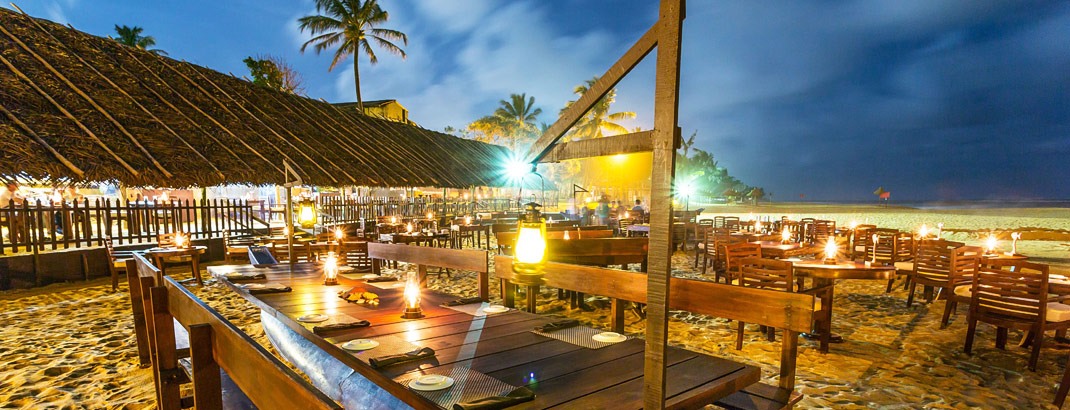

Previous
Next
The city was named ‘Galkissa’, after the Sinhalese word “GalVissa” – meaning twenty boulders. Galkissa was then renamed to “Mount Lavinia” as a mark upon the beautiful dancing girl named Lavinia. The massive country residence of the British Governor was then transformed into a hotel and named “Mount Lavinia Hotel”. You can read this love story in the below paragraph.
History of Mount Lavinia Hotel (1805)
The story of one of the most renowned 4-star hotels in Colombo starts in the year 1805, with Sir Thomas Maitland, a gallant military General, who sailed to the island of Ceylon (as Sri Lanka was known at that time) to assume duties as the second British Governor. He was better known by the sobriquet” King Tom”.
King Tom had the desire to build a grand country mansion for himself, as he was very dissatisfied with the accommodation provided to him on arrival, which he regarded as hardly fitting for a man of his rank and stature. On his travels around the island, he discovered the perfect location for a stately house, on a promontory overlooking the sea in the village of Galkissa, not too far from the capital, Colombo.
The governor's palace, Mount Lavinia, Sri Lanka
While at Ceylon, Sir Thomas Maitland was attracted to a place at called “Galkissa” then now named Mount Lavinia and decided to construct his palace there.
During this time, Sir Thomas Maitland fell in love with a half-caste dancing-girl named Lovina, who had been born to Portuguese and Sinhalese parents. During the construction of the palace, Maitland gave instructions for the construction of a secret tunnel to Lovina’s house, which was located close to the governor’s palace. One end of the tunnel was inside the well of Lovina’s house and the other end was in a wine cellar inside the governor’s palace. When the governor came to reside there, he would often use the tunnel to meet Lovina.
The Sinhalese village that surrounded the Governor’s mansion developed into a modern city named “Galkissa”. Later the city was renamed “Mount Lavinia” in honour of Lovina. In 1920 the tunnel was sealed up.
The bicentenary celebration of the Mount Lavinia Hotel was held in 2005. Some of Sir Thomas Maitland’s relatives living in the UK attended the ceremony.
Buddhist Temples in Kandy


Kandy is blessed not only with the sacred Temple of the Tooth, but also with a name, Kandy. So sweet it is irresistible. It is the one place on the itinerary of every visitor, and it doesn’t disappoint. Its location, the temple, the ambience, the royal history, the beautiful lake and everything about the city is delightful.
Sri Dalada Maligawa or the Temple of the Sacred Tooth Relic is a Buddhist temple in the city of Kandy, Sri Lanka. It is located in the royal palace complex of the former Kingdom of Kandy, which houses the relic of the tooth of the Buddha. Since ancient times, the relic has played an important role in local politics because it is believed that whoever holds the relic holds the governance of the country. Kandy was the last capital of the Sri Lankan kings and is a World Heritage Site mainly due to the temple.
Bhikkhus of the two chapters of Malwatte and Asgiriya conduct daily worship in the inner chamber of the temple. Rituals are performed three times daily: at dawn, at noon and in the evenings. On Wednesdays, there is a symbolic bathing of the relic with an herbal preparation made from scented water and fragrant flowers called Nanumura Mangallaya. This holy water is believed to contain healing powers and is distributed among those present.
Temple of the Tooth


Sri Dalada Maligawa or the Temple of the Sacred Tooth Relic is a Buddhist temple in the city of Kandy, Sri Lanka. It is located in the royal palace complex of the former Kingdom of Kandy, which houses the relic of the tooth of the Buddha. Since ancient times, the relic has played an important role in local politics because it is believed that whoever holds the relic holds the governance of the country. Kandy was the last capital of the Sri Lankan kings and is a World Heritage Site mainly due to the temple.
Kandy Lake next to the Temples


Kandy Lake, also known as Kiri Muhuda or the Sea of Milk, is an artificial lake in the heart of the hill city of Kandy, Sri Lanka, built in 1807 by King Sri Wickrama Rajasinghe next to the Temple of the Tooth. Over the years, it was reduced in size. It is a protected lake, with fishing banned
Having been constructed on uncovered paddy fields, this lake is profoundly ensured as it’s considered critical in keeping up the stylistic theme of Kandy alongside numerous promising stories identified with it. It has now transformed into a champion amongst the most acclaimed sights in Sri Lanka, especially in view of the astounding stories about it and its man-made qualities which make it a sight of supernatural occurrence. The Kandy lake’s boundary is 3.4 km and the walakulu wall is around 2060 feet around the Kandy lake.
Golden Temple of Dambulla


Dambulla cave temple also known as the Golden Temple of Dambulla is a World Heritage Site in Sri Lanka, situated in the central part of the country. This site is situated 148 km east of Colombo and 72 km north of Kandy.The rock of Dambulla is the centre of a Buddhist cave-temple complex established in the 3rd century BC and occupied continuously until today. Its location has marked a transportation node between the Eastern and Western. The site also includes evidence of human occupation going back to the prehistoric period.
City of Galle
The city of Galle is located on the Southwestern Coast of Sri Lanka and is nothing less than a place of wonders and exquisite beauty. The city was first fortified by the Portuguese, then colonised by the Dutch and finally ruled by the British. So, as a result, you will witness a beautiful blend of all the cultures. Thus, a visit to Sri Lanka is incomplete till you spend some time at Galle. It is known for the Galle Fort, the Lighthouse and the beaches in Galle. When you are done with exploring all the attractions, go to the beaches for refreshing and rejuvenating your soul!
Dutch Fort at Galle


173km from Colombo, has the distinction of being the best-preserved sea fort in South Asia. A living heritage site, this 90-hectare (222 acre) attraction is a superb blend of architecture, with fortifications that resemble those in the coastal areas of Portugal. The fall of Galle to the Dutch in 1640 saw its fortifications consolidated further along the lines of the fortified cities of Europe. The Dutch and the English colonial styles are evident in the area still today. Originally established by the Portuguese in the 16th Century.
Galle Local Streets
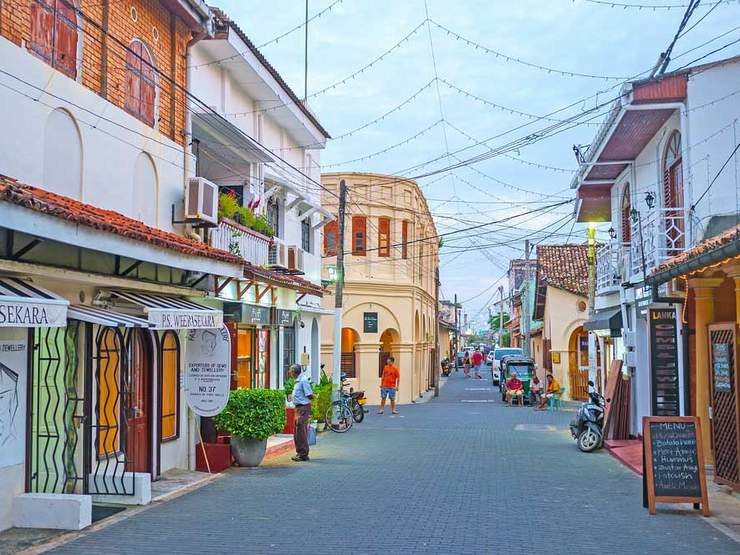


Wandering through the labyrinth of Galle Fort’s narrow, cobbled streets feels like taking a peek into the past. The facades and alleys bearing the names of long-lost trades, old families and forgotten icons date back to the period when Portuguese, Dutch and British ruled the coast of Ceylon (present-day Sri Lanka), with Galle as its undisputed cosmopolitan hotspot. Fort’s history lives on in its street names; each street has its own distinct character and stories to reveal. The mood around town changes with the sun, from early morning until late evening. What a difference a few hours make… Join us for a culturally curious exploration of this unique city — which was declared a UNESCO World Heritage Site in 1988 — that has over 400 years of history, memories and other tales to tell
Galle Beach Trip
Koggala, Unawatuna and Weligama are the most famous of beaches around the Galle area. The wide curving picturesque bay of golden beach is protected by a natural reef. This part of the coast is famous for its stilt fishermen. It is one of the beautiful scenes of this part of the country to watch each fisherman as he sits on his pole firmly embedded in the sea floor with a back-drop of the setting sun.
Sri Lanka´s Stilt Fishing Culture
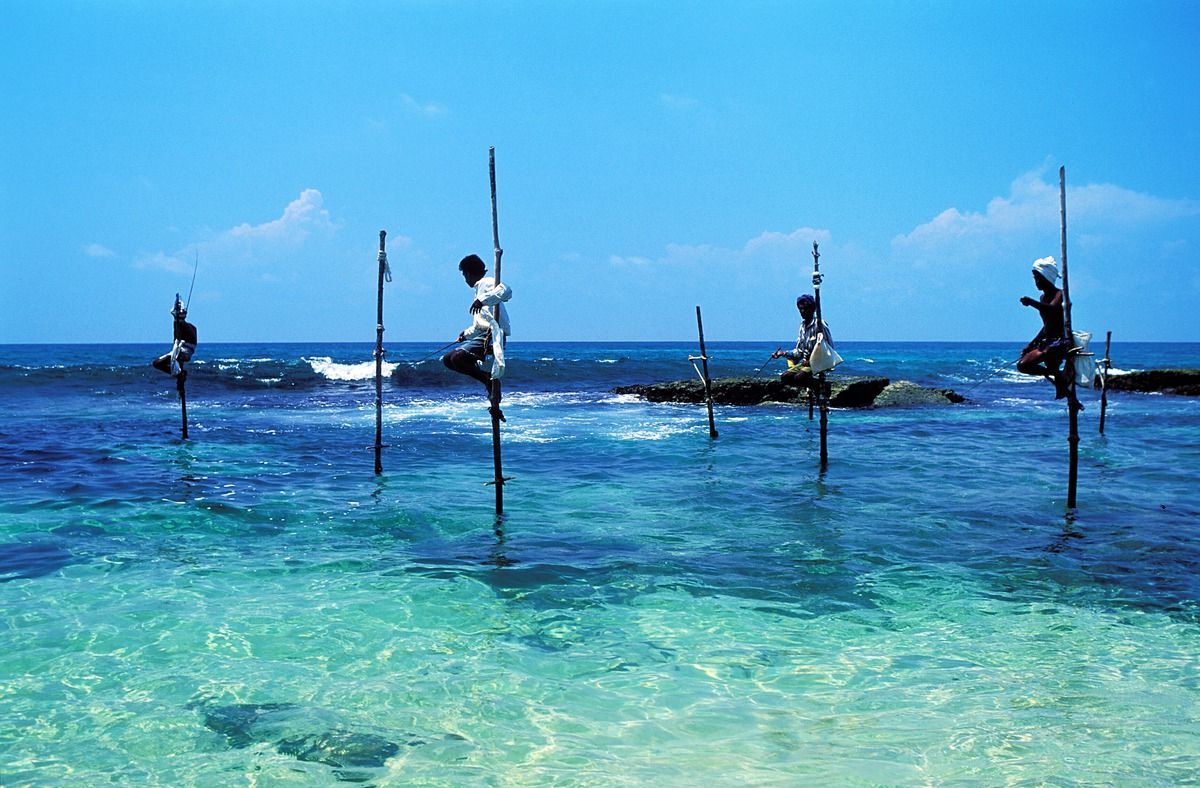

Sri Lankan stilt fisherman, men sit perched far from shore atop crude crucifixes of sticks and twine, dangling fishing rods into schools of fish. The approach looks prehistoric, a common misconception.
The practice started during World War II when food shortages and overcrowded fishing spots prompted some clever men to try fishing on the water. At first they used the wreckage of capsized ships and downed aircraft, then began erecting their stilts in coral reefs. Two generations of fishermen have eked out this physically demanding existence at dawn and dusk along a 30-kilometer stretch of southern shore between the towns of Unawatuna and Weligama.
Koggala Surfing Beach
Koggala is a small homely town which was built around the Second World War right after the Japanese air strikes. You can witness the rarest species of turtles in this region. That’s not all. This beach is famous among locals and tourists for its Instagram-worthy spots and the adventure sports that you can pursue here. You’ll have the time of your life here! Great place to witness the most uncommon and rare species of turtles namely Loggerheads and the Leathery turtle, Also, you may hire a motor boat and explore the beautiful Koggala Lake. Some of the striking features consist of the cinnamon plantation and the Buddhist temple, stop over at the Ananda Spice garden, taste herbal wines and buy herbal products which helps cure sunburns.
To Enjoy some of the best surfing beaches situated between Koggala and Weligama Bay Beach
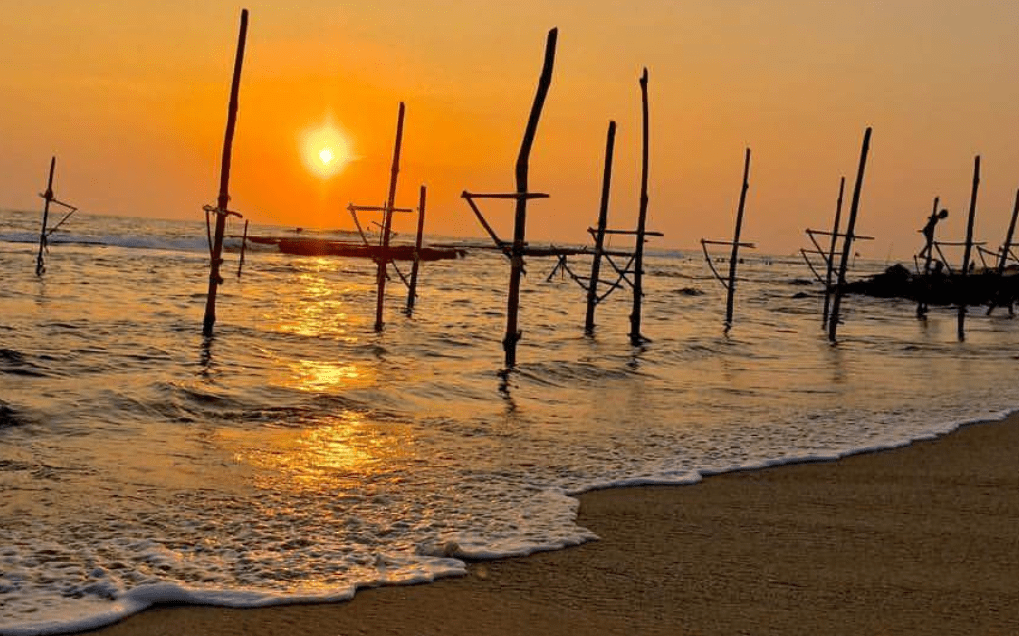
Unawatuna Shallow Water Beach
Unawatuna is a coastal village in Galle district of Sri Lanka. Unawatuna is a major tourist attraction and famous for its beautiful beach and corals easy access from Airport along the coastal road or new motorway of Galle, Unawatuan offer perfect opportunity to swim in shallow water and white sand beaches to relax and watch evening sunset. One of the best beaches in Sri Lanka which is famous for calm blue waters. The unique selling point of this beach is that one could spot a whale shark if lucky.
Best time to visit: Late August and early September as the rain starts to set by mid-October
Famous for: Enjoy some water sport such as scuba diving and snorkelling
- Get some tan at the beautiful golden sand beach
- Take some blessings at the Temple Yatagala Raja Maha Viharaya
- Treat yourself to an Ayurveda massage and get pampered at the sanctuary spa
- Relax at the Thaproban Beach House and enjoy some authentic Sri Lankan cuisine
- This beach is famous for turtle nesting
How to reach: Unawatuna is 150 km from Colombo’s Bandaranayaka International Airport in Katunayaka. The journey through busy Colombo road takes over 3 hours by private vehicles.
Taprobane Island
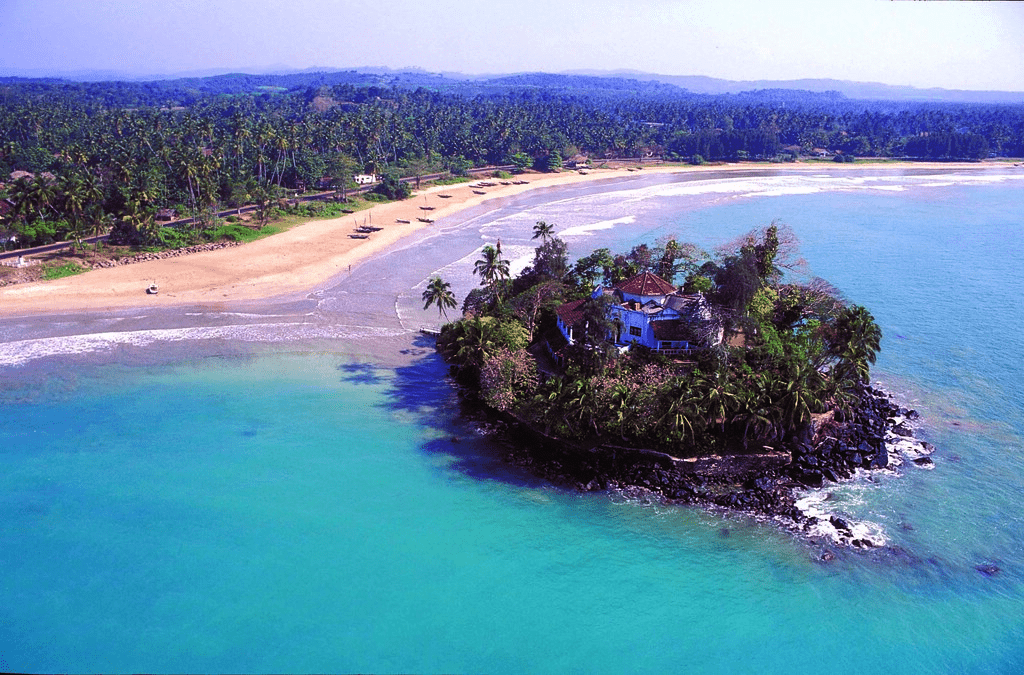

Taprobane Island, originally called “Galduwa” (“Rock Island” in Sinhalese), is a private island with one villa, located just off the southern coast of Sri Lanka opposite the village of Weligama. The island was renamed after the old Greek word for Sri Lanka, by its most famous owner, Maurice Talvande (who styled himself as “Count de Mauny Talvande”), who sighted it around 1925 after a long search for an earthly paradise. He built its villa and replanted the island to create a private Eden. The islet passed on to the American author and composer Paul Bowles and then the Sri Lankan born former United Nations Chief Prosecutor Sir Desmond Lorenz de Silva before it came to the ownership of the Australian businessman Geoffrey Dobbs.
Notable people who stayed on Taprobane include Dutch author Peter ten Hoopen, who spent a month there in 1984 during civil unrest on the mainland, as well as Kylie Minogue, who composed a song about the island inspired by her stay titled “Taprobane (Extraordinary Day)”. It inspired Jason Kouchak to compose “Dark Island” in his 1999 album Watercolours.
The author Robin Maugham, who visited the Island as a young man, and in the mid-1970s, considered the unique beauty and harmony of the villa had become compromised after de Mauny’s death by partitioning and the loss of his furniture and fittings, and that the area itself had been despoiled by the construction of a new road along the mainland beach. Since then, and particularly after the 2004 tsunami, substantial further residential development on the adjoining mainland has occurred. While Arthur C. Clarke’s novel The Fountains of Paradise takes place in “Taprobane,” the setting is recognizably Sri Lanka, not this island.
Ruwanwalisaya Anuradapura
Anuradhapura is one of the ancient capitals of Sri Lanka, famous for its well-preserved ruins of ancient Lankan civilization. From the 4th century BC, it was the capital of Sri Lanka until the beginning of the 11th century AD. During this period, it remained one of the most stable and durable centres of political power and urban life in South Asia. The ancient city, considered sacred to the Buddhist world, is today surrounded by monasteries covering an area of over sixteen square miles.

Adams Peak (Sri Pada)


Though not the highest mountain of Sri Lanka, the striking pyramid of Adam’s Peak is certainly the most remarkable. A depression in the rocky summit resembles a huge footprint, which has been venerated as a sacred sigh from remote antiquity. This was identified by Buddhists as the Buddha’s footprint, by Hindus as that of Shivas, and by Muslims as Adam’s. Later the Portuguese attributed it to St. Thomas the Apostle.
In early times people climbed the peak with great difficulty but later stops were made to facilitate the pilgrims. Marco Polo (1254-1324 AD) who visited the Peak in the 14th century remarked that in places flights of steps were out in the rocks but none upwards and towards the summit. Buddhist pilgrims climbs the 2245m (7242ft) high mountain to honour the legendary footprint of Buddha. A large number of pilgrims visit Adam’s Peak every year. The word Sri Pada means “holy footprint”. All of the religions pay their respect or at least make the adventure to climb the mountain for the sake of achieving the spirit of a holy mountain.
Ella Waterfall and Hiking

Ella is beautiful small town of Sri Lanka popular with tourist and local for day out and hiking. Ella has one of the most stunning views in Sri Lanka, straight through Ella Gap, a valley between the hills that opens up to the southern plains of Sri Lanka. Ella is a perfect place to spend a morning to tackle the beautiful short walk up to the top of Little Adam’s Peak.
Ella Waterfall and Hiking
The name Weligama, literally means “sandy village” which refers to the area’s sandy sweep bay. It is approximately 144 kilometres (89 miles) south of Colombo.
The main industries are tourism and fishing. Weligama is a popular tourist destination and hosts several boutique hotels including an off shore islet known as Taprobane, which houses a villa constructed by the French Count de Mauny, and is currently owned by Geoffrey Dobbs. It was the birthplace of the scholar monk Weligama Sri Sumangala.
The area is also famous for its distinct stilt fishermen,who erect a single pole in the chest-deep water on the beach, just few meters off-shore, where they perch on a cross bar and using bamboo fishing rods cast their lines out beyond the surf break to catch small fish.
The Bridge on the River Kwai was filmed on the River near Kitulgala.
Kitulgala, on Kelaniya river, is a great place to stay if you are looking for nature & adventure like white water rafting. Kitulgal is small town in the west of Sri Lanka approximately 100km from Colombo and popular with water rafting. The river flowing through the village offering white water rafting adventure in Sri Lanka,The Academy Award-winning the Bridge on the River Kwai was filmed on the Kelani River near Kitulgala, although nothing remains now except the concrete foundations for the bridge

Minneriya National Park


Located in North central Province of Sri Lanka, the park is home to Sri Lankan favourites wild life of Sambar deer, Leopards, Elephants and much more, the area was designated as a national park on 12 August 1997, having been originally declared as a wildlife sanctuary in 1938, The park is incredible place observe the Elephants who come to bath and glaze on the grasses as well as the huge birds that come to fish in the shallow water.
Mirissa beach -Nature - Whale Watching


Mirissa is a small heaven located in the South Coast of Sri Lanka, only about 200km away from the Equator.
MIRISSA 154 KM (95 Miles) From Colombo
Mirissa is a small heaven located in the South Coast of Sri Lanka, only about 200km away from the Equator. The small town is ever-famous for its natural beaches which are mostly untouched by any man-made modernization, which makes it well-loved and very sought after when it comes to holidays and vacations, even—honeymoons.
Mirissa’s sandy beaches gives life to your fantasies of a tropical heaven, the secluded crescent shaped beach is like a reclusive hidden Island that is a hideaway for many. The town’s sunsets and sunrises are said to be one of the finest ever, the peace that surrounds people spending time in the hotels set aback from the actual beach is quite unmeasured. The gentle waves of the ocean crashing and building into a crescendo, coconuts falling and birds chirping. Mirissa is a tourist heaven and must not be missed!
Surfing at Mirissa
Mirissa’s Bay Surf point is famous for smooth surfing; you can surf with no inhibitions and enjoy a carefree ride through the ocean, experiencing it on a level that would be unforgettable for the many years to come. This popular resort is extremely attractive for the British tourists specially for surfing, Dolphin and Whale Watching.
Mirissa beach -Nature - Whale Watching
Kalpitiya located in East Coast of Sri Lanka, four hours north of Colombo. Kalpitiya is becoming one of the most popular attractions in Sri Lankan with opportunity of Whales and Dolphins watching during April to August, there regular boat trips to catch sights of hundreds of Dolphins and largest tooth Whale in the world and occasionally Blue Whales.
Nuwara Eliya (Little England)


The city was founded by Samuel Baker, the explorer of Lake Albert and the upper Nile in 1846. Nuwara Eliya’s climate lent itself to becoming the prime sanctuary of the British civil servants and planters in Ceylon. Nuwara Eliya, called Little England, was a hill country retreat where the British colonialists could immerse in their pastimes such as fox hunting, deer hunting, elephant hunting, polo, golf and cricket.
Nuwara Eliya is hill country of Sri Lankan with picturesque of landscape and the location which produced well known Ceylon Tea, the city believed to be discovered by British colonial in the 19th century, many of building in and around the city still retain from historical architectural from Britishcolonial.
Many of the buildings retain features from the colonial period such as the Queen’s Cottage, General’s House, Grand Hotel, Hill Club, St Andrew’s Hotel and Town Post Office. New hotels are often built and furnished in the colonial style. Visitors the city can wallow in its nostalgia of bygone days by visiting the landmark buildings. Many private homes maintain their old English-style lawns and gardens.
Attractions
The town’s attractions include the golf course, trout streams, Victoria Park, and boating or fishing on Lake Gregory. Victoria Park is an attractive and well-used oasis. It is popular with birdwatchers at quieter times because of the good opportunities for seeing species, particularly the Indian blue robin, pied thrush or scaly thrush lurking in the denser undergrowth. The Kashmir flycatcher is another attractive bird species in the park.
Galway’s Land Bird Sanctuary, close to Lake Gregory, is an area of montane forest a few kilometres east of the town. Covering an area of 0.6 km2 it is home to many bird and mammal species endemic to Sri-Lanka, including wild boar and barking deer.
The city is a base for visits to Horton Plains National Park. This is a key wildlife area of open grassy woodland. Species found here include the leopard, sambar, and the endemic purple-faced langur. Endemic highland birds include the dull-blue flycatcher, Sri Lanka white-eye, and yellow-eared bulbul. The plains have a well-visited tourist attraction at World’s End, a sheer precipice with a 1050 m drop. The return walk passes the scenic Baker’s Falls. Early morning visits are best, both to see the wildlife and to view World’s End before mists close in during the latter part of the morning.
One of the distinctive features of Nuwara Eliya’s countryside is the widespread growing of vegetables, fruit and flowers usually associated with temperate Europe. This “Little England” is covered with terraces growing potatoes, carrots, leeks, and roses, interspersed with tea bushes on the steeper slopes.
The slow-growing tea bushes of this highland region produce some of the world’s finest orange pekoe tea. Several tea factories around Nuwara Eliya offer guided tours and the opportunity to sample or purchase their products.
‘Lovers Leap’ is a spectacular waterfall set among tea plantation a short walk from the town of Nuwara Eliya. It falls a height of 30m in a long cascading sheet of water. It is said that it is named after a young couple who decided to be bound together forever by jumping off the cliff to their demise.
The Grand Hotel - in Nuwara Eliya


The Grand Hotel is a five-starluxury hotel in Nuwara Eliya, Sri Lanka, that was built in the style of an Elizabethan-era manor house. The hotel has 154 rooms, including three presidential suites, four junior suites, a governor’s suite that have been maintained to preserve the traditional design. The Grand Hotel has a number of restaurants, bars, a billiards room and a swimming pool.
History
The original building, a single storey bungalow, called ‘Barnes Hall’, was constructed as the holiday residence of Sir Edward Barnes, the fifth Governor of Ceylon (1776-1838) in 1828, for the sum of £8,000. Following Barnes’ departure from Ceylon in 1831 it was rented to his successor as Governor, Sir Robert Wilmot-Horton. It was subsequently purchased by Reginald Beauchamp Downall (1843-1888), a planter and member of the Legislative Council of Ceylon, who operated it a small guest house/hotel. On 12 April 1892 it was sold to the Nuwara Eliya Hotels Company Limited. William Milsom, owner of “property, known as Barnes Hall on which is built the Grand Hotel” sold it to the Company for Rs. 35,000/-
In the 1930s the third storey was constructed with its mock Tudor facade. The main restaurant, Barnes Hall, was named for the former governor. Notable guests who have stayed at the Grand include the Duc d’Abruzzi (brother of the Italian Sovereign), Leopold of Saxe-Coburg-Gotha (nephew of King Edward), the Grand Duke of Saxe-Weimar, Prince Reuss XXXII, the Maharaja of Kapurthala, Jagatjit Singh and Sir Thomas Lipton. Lord Mountbatten is also reported to have stayed at the Grand Hotel.
Elephant Orphanage - Pinnawala


Pinnawala Elephant Orphanage is an orphanage, nursery and captive breeding ground for wild Asian elephants located at Pinnawala village, 13 km (8.1 mi) northeast of Kegalle town in Sabaragamuwa Province of Sri Lanka. Pinnawala has the largest herd of captive elephants in the world. In 2011, there were 96 elephants, including 43 males and 68 females from 3 generations, living in Pinnawala.
Started in 1975 when five baby Elephants were rescued from jungle without their mother, now believed to be one of the largest Elephants Orphanage in the world. the orphanage was primarily designed to afford care and protection to the many baby Elephants found in the jungle without their mother. these 24 acres large Elephants Orphanage is an also breeding place of elephants. there were many Elephants born in the Orphanage since 1984.
Pinnawala Elephant Orphanage is an orphanage, nursery and captive breeding ground for wild Asian elephants located at Pinnawala village, 13 km (8.1 mi) northeast of Kegalle town in Sabaragamuwa Province of Sri Lanka. Pinnawala has the largest herd of captive elephants in the world. In 2011,
Interesting Experience
Your visit will be consisting of 3 parts: viewing the elephants grazing, watching the bottle feeding the babiesand observing the elephants in the river. Upon arrival, you seeherds of elephants freely walking around and congregating in the river and in the grassy area. Also, you are allowed to get near to the baby elephant feeding area, normally the babies are chained during the feeding, but when you walked into the arena freely and you don’t see them distressed at all. With all the tourists observing, facilities arranged for tourist are safer for all involved. At a designated time, the elephants crossed the road and entered the river where they drank, bathed, socialized, etc. Note; elephants are not being treated cruelly as you see and read in the social media. There are coffee shops and restaurants available in front of the river where you can enjoy watching the elephants bathing in the river.
Your visit will be consisting of 3 parts: viewing the elephants grazing, watching the bottle feeding the babiesand observing the elephants in the river. Upon arrival, you seeherds of elephants freely walking around and congregating in the river and in the grassy area. Also, you are allowed to get near to the baby elephant feeding area, normally the babies are chained during the feeding, but when you walked into the arena freely and you don’t see them distressed at all. With all the tourists observing, facilities arranged for tourist are safer for all involved. At a designated time, the elephants crossed the road and entered the river where they drank, bathed, socialized, etc. Note; elephants are not being treated cruelly as you see and read in the social media. There are coffee shops and restaurants available in front of the river where you can enjoy watching the elephants bathing in the river.
Polonnaruwa
Polonnaruwa was the second capital of Sri Lanka after the destruction of Anuradhapura in 993. Polonnaruwa bears witness to several civilizations, of the Sinhalese sovereigns during the 12th and 13th centuries. This immense capital created by the megalomaniac sovereign, Parakramabahu, in the 12th century, is one of history’s most astonishing urban creations, both because of its unusual dimensions and because of the very special relationship of its buildings with the natural setting. It is also a shrine of Buddhism and of Sinhalese history.
Gal Vihara (Sinhala: stone temple), Buddhist Temple at (UNESCO World Heritage Site) at Polonnaruwa, Sri Lanka is the most perfect specimen of Buddha statue hewn out of solid stone. … Then again Gal Vihara testifies to the influence of Mahayana Buddhism during the 12th century.
The ancient city of Polonnaruwa in central Sri Lanka is a shining place of palaces and shrines. I particularly admire the superb inscription left by one haughty ruler, informing an envious rival that he is like a jackal wanting to be a lion, a worm, a cobra, a sheep, a horse, a firefly, the sun. That’s one heck of a putdown.


Trincomalee Harbour- Second best natural harbour in the world
Trincomalee harbour is the second-best natural harbour in the world and the available water and land area is about 10 times as much as the Port of Colombo. Trincomalee was tentatively identified to cater for bulk and break-bulk cargo and port related industrial activities including heavy industries, tourism and agriculture etc. At present SLPA is in the process to re-develop Trincomalee as a metropolis growth centre. SLPA has completed zoning plan to utilize the huge amount of existing unutilized land under its judurisition on the outcome of the analysis with the other sectors of the development, such as UDA, BOI, and Tourist Board etc. SLPA plans to advertise internationally and locally to call for proposals from potential investors. Evaluated RFP have been submitted for approval.
Also, Trinco harbour is famous for snorkelling, and swimming. There are great places to swim and the tourist love this beach, as it is a very safe and beautiful.
Historically referred to as Gokanna or Gokarna it has been a sea port that has played a major role in maritime and international trading history of Sri Lanka.
The Bay of Trincomalee provides security and is openly accessible to all types of sea crafts in all weathers. The beaches are used for recreational purposes such as surfing, scuba diving, fishing and whale watching. The city is renowned for housing the largest Dutch fort in Sri Lanka. It is home to major Sri Lankan naval bases and a Sri Lankan Air Force base.
Rathnapura
The Gems city of Sri Lanka situated 160 Km from Capital Colombo and Main River called Kalu Gaga (Black river) that flows through the city used to mainly for meaning of gems which produce some of most expensive gem in the world such as Rubies and Blue sapphires.
This City of Gems is also the gateway to the hill country from the Southern plains. The scenic route takes you passing paddy fields, rubber plantations and tea estates.
Sri Lanka has produced three of the world’s largest blue sapphires, including the ‘Blue Belle of Asia’ (which adorned the British crown and holds the world record for any Sapphire sold at an auction); as well as the ‘Star of India’, displayed at the New York Museum of Natural History.
Throughout history, Sri Lanka has been known as a land of gems. King Solomon was said to have procured a great ruby for the queen of Sheba from Sri Lanka. Marco Polo (1293 AD) wrote about the ruby that once graced the Ruwanweliseya Dagoba at Anuradhapura” a flawless ruby a span-long and quite as thick as a man’s fist”.
Sigiriya (Lion Rock)
Sigiriya is witness to the civilization of Ceylon during the years of 6th century the reign of king Kassapa.Area dominated by a massive column of rock nearly 200 meters high. The site was selected by King Kasyapa (477 – 495 AD) for his new capital. He built his palace on the top of this rock and decorated its sides with colourful frescoes.The name of this place is derived from this structure the Lion Rock. The capital and the royal palace were abandoned after the king’s death. It was used as a Buddhist monastery until 14th century.

Yala National Park
No visit to Yala is likely to disappoint, and wildlife that you are likely to view aside from the infamous leopards includes Indian elephant, wild boar, mongoose, crocodile, spotted deer, crocodiles and lizards, amongst others. The bird life of the park is equally varied, with in excess of 230 species that may be spotted and this includes a number of endemic species such as jungle fowl and grey hornbill. Also, the water buffalo in Yala National Park are wild.
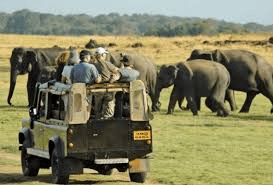



Nestled in the south-eastern corner of Sri Lanka, Yala National Park is the island’s principle national park and offers the greatest diversity of animal and birdlife in the country. The habitats found in the park are wide-ranging, from freshwater lakes to beaches, rocky outcrops to green plains and jungle. This creates an area of immense biodiversity and is one of the world’s most popular destinations to spot the elusive leopard, who love to lounge on the huge granite boulders that dot the parkland.
Yala National Park (also known as Ruhunu National Park) is the most visited and second largest national park in Sri Lanka. Actually, it consists of five blocks, two of which are now open to the public; and also adjoining parks. It is situated in the southeast region of the country, and lies in Southern Province and Uva Province. The park covers 979 square kilometres (378 sq. mi) and is located about 300 kilometres (190 mi) from Colombo. Yala was designated as a wildlife sanctuary in 1900, and, along with Wilpattu it was one of the first two national parks in Sri Lanka, having been designated in 1938. The park is best known for its variety of wild animals. It is important for the conservation of Sri Lankan Elephants and aquatic birds.
Situated in a dry zone of Sri Lanka, annual rainfall for the Yala region is between 900 and 1300mm depending on location, with December and January generally the wettest months and drought between May to September. One of our specialists who visited the area in what is usually considered the least likely time to spot leopard had two sightings, so the park is a great destination for wildlife and enjoyable at various times of year, although the roadways do tend to be bumpier after rainfall.
The specialist leopard safaris consist of two vehicles with long wave radios in order to cover as much of the park as is possible. A specialist local wildlife expert who is experienced in tracking the leopards and also a professional wildlife photographer will ensure you get the most from your experience.
Udawalawe National Park

Park is located approximately 200km from and south east of Colombo and most popular with large Elephants and has become one the most visited tourist attraction in Sri Lanka.
This 30.000 hectare of park is home to many animals including Elephants (Approximately 400), Water Buffalo, deer’s and several groups of birds.
Udawalawe National Park


Yala National Park is a huge area of forest, grassland and lagoons bordering the Indian Ocean, in southeast Sri Lanka. It’s home to wildlife such as leopards, elephants and crocodiles, as well as hundreds of bird species. Yala National Park is well known for its highest concentration of leopard in the world. Inland, Sithulpawwa is an ancient Buddhist monastery. Nearby caves contain centuries-old rock paintings. Southwest, Magul Maha Viharaya also has ancient Buddhist ruins. Both are pilgrimage sites
Sithulpawwa Rajamaha Viharaya is an ancient Buddhist monastery located in Hambantota District, South Eastern Sri Lanka. Situated 18 km east of the pilgrimage town Katharagama, it is believed to have been built in the 2nd century B.C by king Kavantissa.[1] Sithulpawwa Vihara can be reached by travelling 18 miles along the Tissamaharama-Yodhakandiya road towards the Yala National Park. The name Sithulpawwa is derived from the word “Chiththala Pabbatha”, which means the hill of the quiet mind
A local chef at work



Snorkelling in Sri Lanka photos
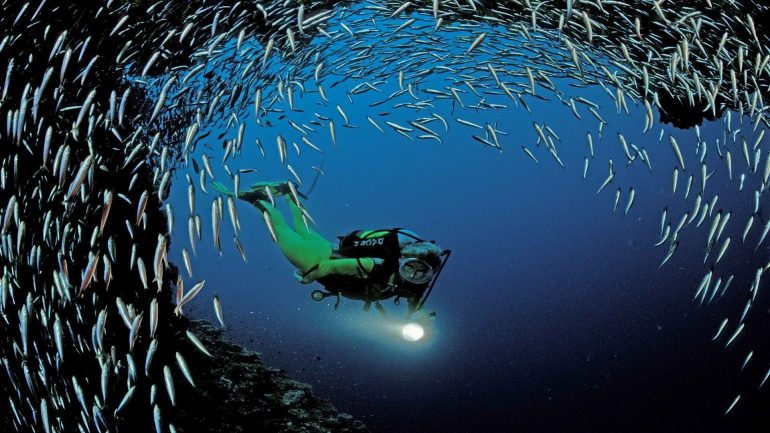


Local Chefs Unawatuna Beach SriLanka
